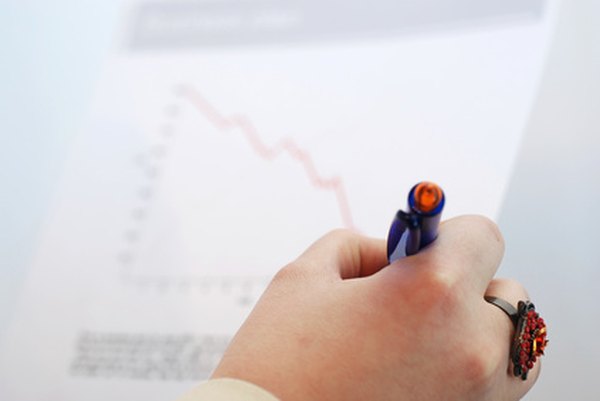Difference Between Forward & Trailing Dividends
Keeping track of your stock's dividends is crucial.
chart image by DXfoto.com from Fotolia.com
Dividends are a major source of income for some investors. When stock prices fail to advance much, dividend payments can provide a relatively dependable revenue stream. Look at past and projected dividends of the stocks in your portfolio. Forward and trailing dividends help you do that.
Tip
Whereas a forward dividend yield provides an estimate of the current divided yield for the year based on relevant data, the trailing dividend yield provides the actual dividend payout for the prior year based on share price.
Exploring Dividend Basics
Dividends are cash payments distributed to the shareholders of a corporation. These payments are financed by the firm's profits and occur anywhere from once (annually) to four times (quarterly) a year. Dividends must be approved by the firm's board of directors and are at the discretion of this governing body.
Even if the firm is highly profitable, it has no legal obligation to pay out dividends and can elect to channel all the money back into the company. When the board approves a dividend payment, it will also choose record and payment dates. Any investor who owns the stock on the record day will receive a payment shortly thereafter, on the payment date.
Trailing vs. Forward Dividends
Trailing dividends equal the total dividends paid per common share of a firm during a specific preceding period. Trailing 12 month dividends are the sum of all dividends paid during the last year. Forward dividends are those that are expected to be paid out at a specific point in the future. Unless otherwise specified, you can assume that the time period in question, for forward as well as trailing dividends, is 12 months.
While trailing dividends can be calculated with absolute accuracy, estimating forward dividends is an inexact exercise. Some firms have exceptionally stable dividend policies, paying the same amount quarter after quarter, while the payouts of other firms can fluctuate depending on their business prospects.
Dividend Rate vs. Yield
The total amount of dividends paid in a 12 month period, whether it is the past or future 12 months, is sometimes referred to as dividend rate. You may for example hear that Ford Motor Company has a trailing dividend rate of $1, which is the same thing as saying the stock has trailing dividends of $1.
Dividing the dividend rate by stock price and multiplying the outcome by 100 results in dividend yield. If Ford stock is trading at $20 per share, its dividend yield equals $1/$20*100, or 5 percent. In other words, you can expect to receive $5 of cash dividends for every $100 invested in Ford stock.
Evaluating Preferred Shares
While all public companies have common stock, some also have a different class of shares called preferred stock. These shares receive a fixed dividend payment every year, which the board can suspend under extraordinary circumstances but cannot increase. Common stockholders cannot receive a dividend until preferred stockholders have been paid in full.
In case of bankruptcy, preferred stockholders have priority over common shareholders to the proceeds from the firm's dissolution. Hence the name "preferred stock." When dealing with preferred shares, forward and trailing dividends are equal, unless there has been or is likely to be a temporary suspension of preferred dividends.
References
Writer Bio
Hunkar Ozyasar is the former high-yield bond strategist for Deutsche Bank. He has been quoted in publications including "Financial Times" and the "Wall Street Journal." His book, "When Time Management Fails," is published in 12 countries while Ozyasar’s finance articles are featured on Nikkei, Japan’s premier financial news service. He holds a Master of Business Administration from Kellogg Graduate School.

